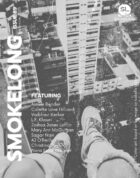The image of the map, the necessity of travel, and the importance of place are central to “The Map That Leads Nowhere,” yet the setting and the characters’ destination are never named; however, both of your main characters are named. Was the naming of people but not places an intentional choice, and if so, what impact did you hope it would have on the reader’s relationship with Raja, Nadi, and their world?
Yes, it was intentional. Names preserve people; they humanize, anchor, and resist erasure. I wanted Raja and Nadi to be remembered as individuals, not as faceless figures in a crowd. In contrast, I withheld the names of places so that the geography could feel both specific and universal—suggestive but not pinned down. That decision draws the reader closer to the boys themselves, their relationship, and the moral stakes of their choices, rather than letting the story rest on a map.
The setting and conflict are also enhanced by your structural choices. Did you have any particular motivations or inspirations when deciding to write the piece as a single, complex sentence?
The single sentence came out of a prompt in one of my fiction workshops, but it also mirrors the breathless urgency of escape and the suffocating impossibility of it. Memory, especially grief, doesn’t pause neatly at periods; it runs on and on. I was also inspired by writers who collapse time into syntax—Saramago, Márquez, and many others. The unbroken structure becomes both container and burden, holding trauma, history, and silence in the same breath. I wanted the reader to feel carried forward without reprieve, just as the characters are.
Both “The Map That Leads Nowhere” and your story “Inheritance” explore familial relationships, more specifically the loss of family. What aspects of familial grief appeal to you as a theme in your work?
Family is where we inherit both love and silence. To lose family is to lose a witness, someone who remembers you before the world reshaped you. Familial grief is never just individual; it ripples outward, reshaping generations. I return to this theme because survival often means carrying not only your own pain but also the absence of those who should have been beside you. In both stories, I’m circling the same wound: how grief and inheritance entwine, and how silence fills the space left behind.
You have described your work as exploring “the inheritance of silence.” What techniques, figurative devices, and/or syntactic choices do you find interesting when writing to emphasize silence and things left unsaid?
Silence is one of my main inheritances, and I try to write toward it rather than around it. Figuratively, I lean on metaphors of absence—cracked water tanks, smoke, maps that cannot be unfolded. Repetition helps echo the way silence lingers; what goes unsaid keeps returning. Syntactically, I use abrupt breaks, caesuras, and shifts in rhythm so that the shape of the sentence enacts the weight of what’s missing. Silence on the page is never empty; it carries the charge of danger, memory, and restraint.
In “The Map That Leads Nowhere,” acts of violence and death aren’t explicitly described, yet influence the characters heavily and are present in the haunting images of burning fields, speeding bullets, and kicked down doors. How does the threat of what can’t be described, only run from, in this story relate to your exploration of silence?
I wanted violence to exist at the edges of perception—always present, rarely named directly. For those living under occupation or authoritarian rule, violence is ambient: it hovers in every choice and gesture. By not describing it outright, I tried to mimic how trauma is remembered—through fragments of sound, flashes of fire, atmospheres of dread. That approach ties back to silence. The greatest weight often lies in what cannot be said or shown. For Raja, the silence left by Nadi’s absence is more unbearable than any single scene of described brutality. It is a silence wide enough to shape the rest of his life.

